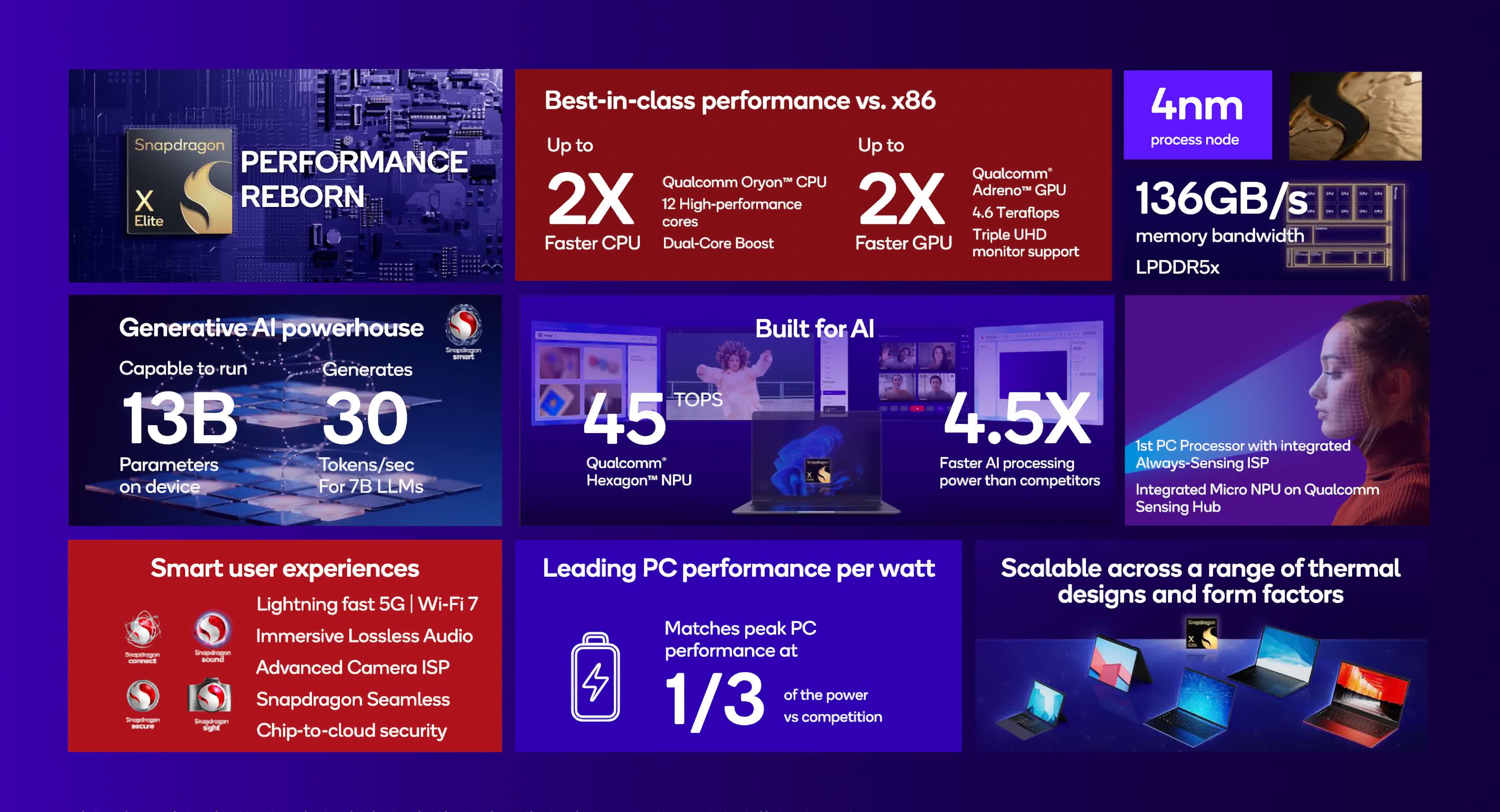Serving tech enthusiasts for complete 25 years.
TechSpot intends tech study and proposal you can trust.
Bottom line: While Arm-based PCs look immoderate hurdles, their imaginable for maturation remains significant, driven successful peculiar by claims of superior artillery life compared to erstwhile generations. Intel, meanwhile, is making improvements to accommodate to caller marketplace demands.
The PC marketplace is undergoing a important displacement arsenic Arm-based processors summation traction, challenging nan long-standing power of x86 architecture. However, this modulation is not without challenges, arsenic highlighted by Michelle Johnston Holthaus, interim co-CEO of Intel, during nan Barclays 22nd Annual Global Technology Conference.
Johnston Holthaus precocious claimed that retailers are grappling pinch a precocious return complaint of Qualcomm-powered machines. "If you look astatine nan return complaint for Arm PCs, you spell talk to immoderate retailer, their number 1 interest is 'I get a ample percent of these back,'" she said, attributing nan rumor to compatibility problems pinch communal applications.
Qualcomm was speedy to respond though, "Our instrumentality return rates are wrong manufacture norms," a typical told CRN. The spokesperson further added that Qualcomm "expects 30% to 50% of laptops to modulation to non-x86 platforms wrong nan adjacent 5 years."

Regardless of 1 declare aliases nan other, Arm-based systems are making inroads into nan PC market. While Qualcomm Snapdragon X Elite machines presently clasp a specified 0.8% marketplace share, nan wide Arm-based customer PC conception commands astir 10% of nan market. This maturation is chiefly driven by Apple's M-series processors, which person paved nan measurement for wider Arm adoption.
Intel, for its part, is acutely alert of nan evolving landscape. "We [will] person much competitors than we person ever had. You will spot much competitors participate nan marketplace successful 2025," Johnston Holthaus said, perchance hinting astatine rumors of MediaTek and Nvidia entering nan Arm-based Windows PC market.
Team Blue has been improving capacity and powerfulness ratio to lucifer Arm-based rivals. "We took excessively agelong astatine Intel to go capacity and power-oriented, and we made a monolithic leap pinch our Lunar Lake merchandise past year," Johnston Holthaus said.
For instance, Intel introduced a hybrid architecture successful its latest processor series, combining Efficient-cores (E-cores) pinch Performance-cores (P-cores) to equilibrium powerfulness ratio pinch precocious performance. This creation went beyond laptops and desktops and had a notable effect successful Xeon 6 datacenter CPUs, which connection 3:1 rack consolidation and up to 2.6x performance-per-watt improvements complete their predecessors.
Intel is besides collaborating pinch Arm to nutrient low-power SoCs utilizing its 18A process and is already integrating AI hardware into its processors. The Lunar Lake architecture, for example, features a fourth-gen NPU tin of delivering up to 48 TOPS – a fourfold betterment complete its predecessor.
Laptops featuring Qualcomm's Snapdragon X Pro and Elite chips were nan first PCs to support Microsoft's Copilot AI features, positioning them astatine nan forefront of nan company's AI PC push. However, astir AI PCs are gaining marketplace traction done Intel and AMD's x86 processors instead.
In Q3 2024, AI PCs accounted for 20% of each PC shipments, a 49% summation from Q2, driven by greater availability. Despite this growth, consumer liking successful AI PCs and GenAI features remains modest. Intel and AMD devices, which correspond astir half of these shipments, are only opening to person support for Copilot.
Meanwhile, Snapdragon X laptops are receiving precocious praises chiefly for their extended artillery life, often lasting a afloat day. Additionally, nan upcoming end-of-life for Windows 10 is expected to thrust a important income boost, arsenic users upgrading to Windows 11 whitethorn inadvertently adopt AI PCs.












 English (US) ·
English (US) ·  Indonesian (ID) ·
Indonesian (ID) ·